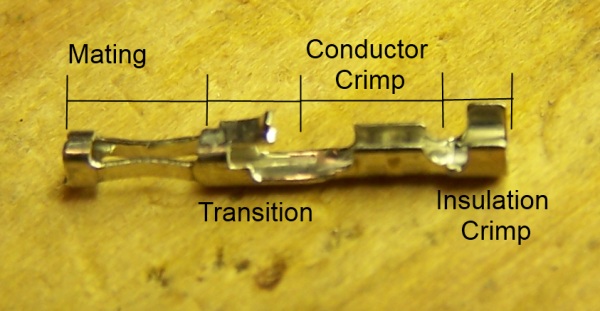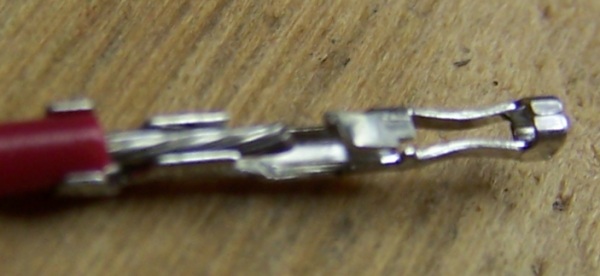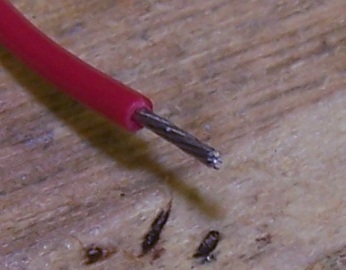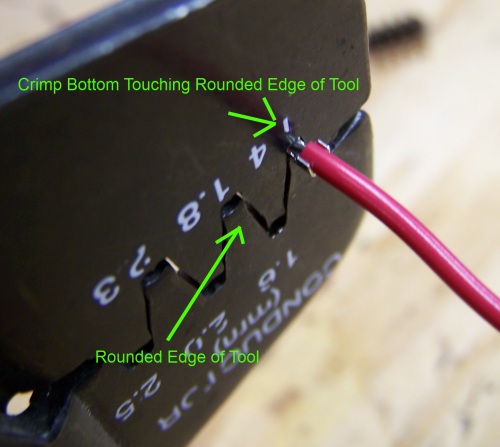Building a Segbot (with a Completed Board)
Crimping a Wire
This page explains how to properly perform a wire crimp. This is important because a bad crimp can cause problems with connections. To begin, the following picture shows the wire crimps we used to make our connectors:

Notice that the crimp has four sections, the insulation crimp, the conductor crimp, the transition section, and the mating section. When crimping, the goal is quite obvious. You want to crimp the wire insulation in the insulation crimp, the wire strands in the conductor crimp, and not damage the transition or mating sections. To do this, strip the insulation off the wire to a length such that when the end of the wire insulation is placed in the insulation crimp, the wire strands extend through the conductor crimp, but not so far that they extend into the transition section. A decent placement and strip length are shown in the following picture:

Before you perform the crimp, make sure to twist the strands of the wire together. The result should look similar to the following picture:

Once the wire is stripped and placed in the crimp, you will need to position the crimp in the crimp press properly. Examples of two crimpers are shown below. In the first picture, a Molex wire crimper is shown. Position the crimp in the crimper such that the bottom of the crimp is against the half of the press with the rounded edge. Also take care the the conductor crimp section and the insulation section line up with the tool correctly. In the second picture a less expensive crimper is shown. Just as with the Molex crimper, make sure the rounded edge is touching the bottom of the crimp. Also, for this crimper, two crimps will need to be performed. First line up the crimp such that the conductor crimp section is crimped when squeezed, then line up the crimp such that the insulation crimp section is crimped when squeezed. A decent crimp should look similar to the third picture shown below. This crimp is far from perfect, but it is good enough for our purposes. If your crimp looks like it is too loose (wire slips out, conductor crimp doesn't squeeze wire strands well), or if your crimp looks too tight (strands bending excessively near transition section, wire insulation being cut), change your crimper size accordingly.



Home ♦ Updates ♦ Videos ♦ Contact Information





